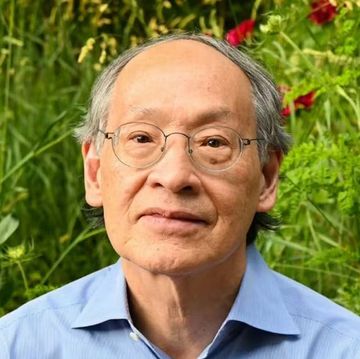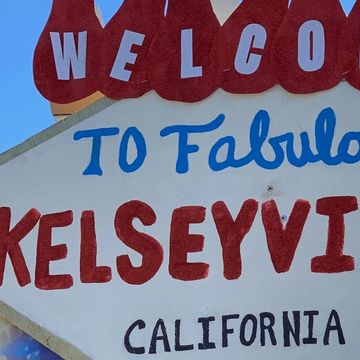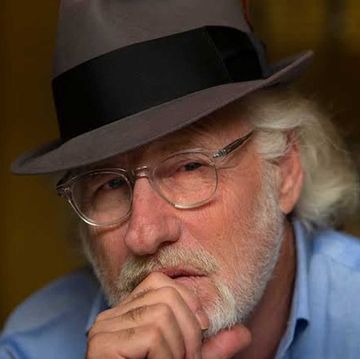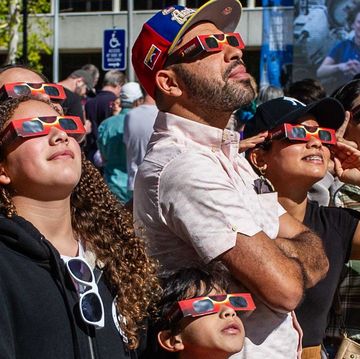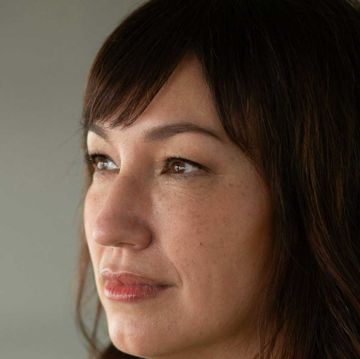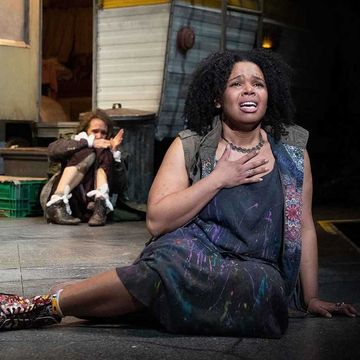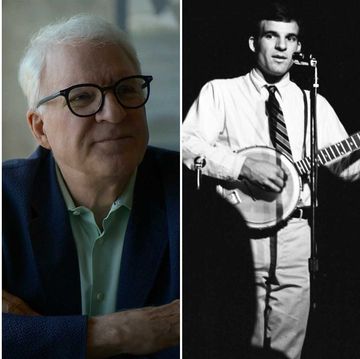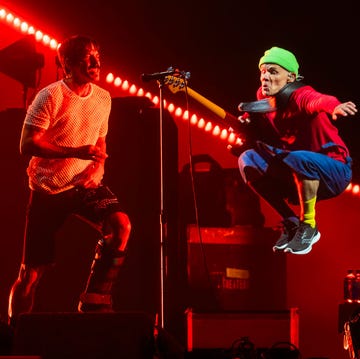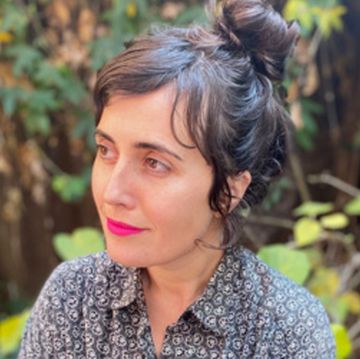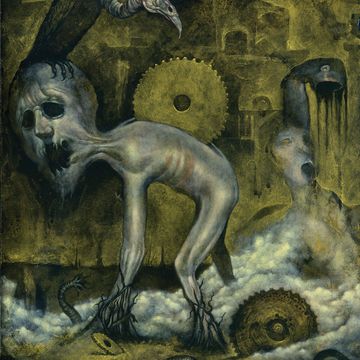Alta Journal is pleased to present the final installment of this five-part original series by author and Alta contributor Gary Kamiya. Each week, we’ve published online the next portion of “Urban Camping.” Visit altaonline.com/serials to read earlier installments, and sign up here for email notifications for future serials.
This Alta Serial is a camping story with a wild twist: It takes place in San Francisco. Kamiya sets out to have a four-night, five-day adventure—without sleeping in a hotel or at a campground. His aim is to touch each of this seven-by-seven-mile city’s four corners and to immerse himself in its natural beauty and built environment. On day five, Kamiya is in the homestretch as he walks the northern waterfront to his home and experiences “a wondrous coincidence of inner and outer geography.”
Friday, June 2, Sutro Heights Park. It’s still dark when I awake. I lie in bed for just a bit longer. It’s a tug-of-war between my reluctance to leave my down cocoon and the growing light. At 5:44, the light wins out. I pack up, kneeling awkwardly in my narrow flowery nook, and walk up to the parapet.
Waking up on this divine balcony is like being injected with an aesthetic speedball. Seagulls soar above me, an interloper crow flies past. Golden Gate Park stretches out below, each side marked by its massive windmill. The sea surges and crashes on Seal Rocks. A mile away, a ship sails out into the endless Pacific. This is the end of the city. When something leaves from here, it’s really gone.
I feel a deep sense of satisfaction, mixed with relief. I’ve slept out in the city four nights in a row and survived. I’ve walked something like 60 miles in four days, and I’m still going. And I’ve saved the best for last. Today’s homestretch, on the northern waterfront, will take me through some of the most spectacular scenery of any city in the world and deliver me to my home turf, the streets I walk every day.
Down on the beach, a 7 a.m. volleyball game has already started. Surfers, runners, people with dogs. It’s the sidewalk ballet of the oceanside. As an east-sider, I’m envious.
I mount up and start walking toward the Lands End trail. I go past the USS San Francisco Memorial, its shell-torn bridge a mute testament to the men who died during the Naval Battle of Guadalcanal. It’s the gun lap, so I put on my headphones and play the most gut-punching, kick-ass, soaring tune I know, “Right Off” from Miles Davis’s A Tribute to Jack Johnson. The telepathic musical communion of Miles and John McLaughlin, a Black heavyweight and a white heavyweight trading some of the greatest punches in the history of jazz improvisation, lights a fire under me that has me dancing inside long after the tune comes to an end.
I walk along the verdant trail, looking north to the reddish Marin Headlands and east to Baker Beach. That haunting fragment of an Ohlone song, “Dancing on the brink of the world,” must have been written about this trail. A few people go past, but I mostly have the trail to myself. I find a big seagull feather, which I stick in my belt. Mile Rocks appears offshore, once home to one of the most spectacular wave-swept lighthouses in the country. The wife of one of the lighthouse keepers used to walk along these cliffs at night with a light, letting her husband know she was thinking of him. I had thought I might eat breakfast among the vets at Fort Miley’s cafeteria, the world’s most glorious government-run greasy spoon, but I don’t feel like climbing the stairs from the trail. So I sit on a bench near the Eagle Point lookout and eat the turkey sandwich I bought last night at Safeway.
I exit Lands End, walk through stately Sea Cliff, and then take the footpath to Baker Beach, a dimension-switching trapdoor that in 10 feet drops you from $10 million houses to a sandy public trail. When I arrive at the beach, I walk to the surf’s edge. This time, I really do feel like I’ve reached a milestone. Because it’s my last day, everything has an epic quality, like I’ve never seen it before and may never see it again. I admire the view of the Golden Gate Bridge from outside the Golden Gate, but I stay only a minute. I leave the sandy beach, traverse a parking lot, and move east into Lobos Creek Valley. I’m on a mission.
I walk along the boardwalk above the dunes, through restored native plant communities; the largest free-flowing creek in the city lies a few yards to the south. The boardwalk ends, and I pass through a grove of Monterey pines. In just a few minutes, I’m at the parking lot near the old Marine Hospital, now a luxury development called the Presidio Landmark. I stop at the Lobos Creek Overlook, which offers an unexpected vista down Lobos Creek Valley to Baker Beach, Mile Rocks, and Lands End. I’m still in the Presidio, not far from Masonic Avenue, in the center of San Francisco. Yet just 15 minutes ago, I was at Baker Beach. It’s the most amazing and unexpected shortcut in the city, a sandy magic carpet that whisks you between two urban universes in the blink of an eye.
I enter Mountain Lake Park, home to the third of the city’s three natural lakes. I’ve come to commemorate something that happened here 247 years ago.
On March 27, 1776, Juan Bautista de Anza, whose statue near Lake Merced I had visited on day three, camped here with a small group of settlers on their first night in what would later become San Francisco. He chose this site because of its fresh water. After camping on the shore of the lake and exploring the beaches to the west, probably riding down the same trail I just walked up, he and his party rode north to a site overlooking the Golden Gate, where Anza chose the site for the future Presidio. Then they rode south. In a warm, protected site a few miles away, he found a creek surrounded by chamomiles and violets. Because it was the Friday of Sorrows, they named the creek Arroyo de los Dolores, and chose it as the site for the mission. Shortly after, Anza rode out of San Francisco, never to return.
Three months later, his lieutenant, José Moraga, led a small party of soldiers, settlers, and priests to San Francisco. On the site of the Presidio, with the blessings of a priest and a blast of muskets and cannon fire, Moraga took formal possession of the land in the name of the king of Spain. San Francisco’s history had begun.
A small boulder in the middle of a lawn south of the lake bears a plaque commemorating Anza’s arrival. I stick the seagull feather in my hat, get out the bottle of Jim Beam I bought last night and never opened, and pour some of it over the plaque. Considering Anza was named after John the Baptist, this is pretty sacrilegious, but I feel like I’ve earned the right to pay homage to El Capitan in whatever fashion I want.
I shoulder my pack again and proceed north, aiming for the Golden Gate Bridge, still following Anza’s footprints. As I look back, some of the places I’ve been in the last five days crowd my mind: Ocean Beach, Lake Merced, Glen Canyon, Visitacion Valley, Irish Hill. I have walked across much of San Francisco. The city feels bigger than it did before, and smaller. I feel like I’m grasping it as a whole more than I ever have before, and at the same time it eludes me more than it ever has. That’s OK. I don’t need a grand conclusion, tied up with a bow. Walking and looking and thinking day after day strips your mind down to a kind of simplicity, an openness to what is. It’s not about seeing what you think you need to see, or thinking what you think you need to think. It’s just about seeing and thinking.
The Presidio is big, and it takes a while to reach Battery Godfrey. Somewhere near here, Anza and his party’s priest and diarist, Father Pedro Font, looked down on the Golden Gate. “The port of San Francisco…is a marvel of nature, and might well be called the harbor of harbors…and I think if it could be well settled like Europe there would not be anything more beautiful in all the world,” Font wrote.
Making my way across the confusing exchanges near the Golden Gate Bridge Toll Plaza, I take the trail that leads down to Crissy Field, emerging near the Warming Hut. Now I’m truly in the homestretch. I have walked along this glorious promenade hundreds of times, but this time it feels more monumental than ever before. I’m the beneficiary of a wondrous coincidence of inner and outer geography. This specific place in the world is objectively spectacular, and it’s also the setting for the final leg of this epic urban adventure. I feel like I’m in my own opera. I’m going home!
It’s when I come to Aquatic Park that the emotions overcome me. I’m exhausted, I’m near the end, and I have deeper memories of this little beach than anywhere else in San Francisco. To my surprise, I begin to weep. The beauty of this place, and something I cannot name, something like grace, rise up in me. I can’t hold back my feelings, and I don’t want to. And as I walk down this beach I’ve walked down a thousand times, unexpected gratitude pours over me. Gratitude for this adventure I have been on, for this little beach, for this city that is my home, for legs to walk with, and eyes to see with, and a brain to think with, and a world to look at, and marvel at, for as much time as I have here.
I’m totally out of gas when I reach Telegraph Hill. I drop my pack off at my apartment and stagger up the steps to Coit Tower. I lay my hands on the warm stone. I turn around and look back at my city. I’ve done it.•
THE END
This completes our five-part serialization of “Urban Camping,” by Gary Kamiya. Kindly drop us a note and let us know if you enjoyed this surprising adventure. Sign up for more Alta Serials here.
Gary Kamiya is a cofounder of Salon, a former executive editor of San Francisco magazine, and a columnist for the San Francisco Chronicle. He was born in Oakland, grew up in Berkeley, and has lived in San Francisco since 1971. His first book, Shadow Knights: The Secret War Against Hitler, was a critically acclaimed narrative history of Britain’s top-secret Special Operations Executive. Kamiya’s second book, Cool Gray City of Love: 49 Views of San Francisco, was awarded the 2013 Northern California Book Award for Creative Nonfiction and has sold more than 50,000 copies. His local history column, Portals of the Past, runs every other Saturday in the San Francisco Chronicle, and Kamiya’s work has appeared in the New York Times Book Review, ArtForum, Sports Illustrated, Mother Jones, and many other publications and has been widely anthologized, including in The Best African American Essays 2010, A New Literary History of America from Harvard University Press, and The Longman Reader. Kamiya is the recipient of numerous awards, including the Ron Ross Founder’s Award by the San Francisco History Association and the Redmond Kernan History Award from the Presidio Historical Association. He lives on Telegraph Hill.







